Related Research Articles

Marlborough House, a Grade I listed mansion in St James's, City of Westminster, London, is the headquarters of the Commonwealth of Nations and the seat of the Commonwealth Secretariat. It was built for Sarah Churchill, Duchess of Marlborough, the favourite and confidante of Queen Anne. For over a century it served as the London residence of the dukes of Marlborough. It became a royal residence through the 19th century and first half of the 20th. It was leased by Queen Elizabeth II to the Commonwealth Secretariat beginning in 1965.
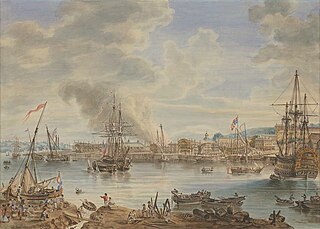
Chatham Dockyard was a Royal Navy Dockyard located on the River Medway in Kent. Established in Chatham in the mid-16th century, the dockyard subsequently expanded into neighbouring Gillingham.
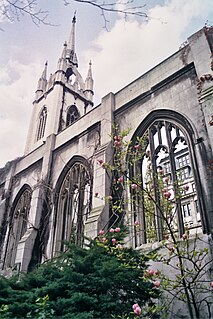
St Dunstan-in-the-East was a Church of England parish church on St Dunstan's Hill, halfway between London Bridge and the Tower of London in the City of London. The church was largely destroyed in the Second World War and the ruins are now a public garden.
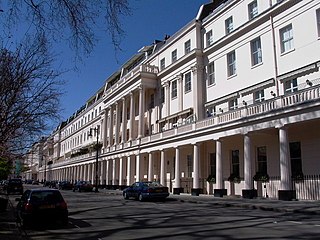
Eaton Square is a grand, rectangular, residential garden square in London's Belgravia district. It is the largest square in London. It is one of the three squares built by the landowning Grosvenor family when they developed the main part of Belgravia in the 19th century that are named after places in Cheshire — in this case Eaton Hall, the Grosvenor country house. It is larger but less grand than the central feature of the district, Belgrave Square, and both larger and grander than Chester Square. The first block was laid out by Thomas Cubitt from 1827. In 2016 it was named as the "Most Expensive Place to Buy Property in Britain", with a full terraced house costing on average 17 million pounds — many of such town houses have been converted, within the same, protected structures, into upmarket apartments.
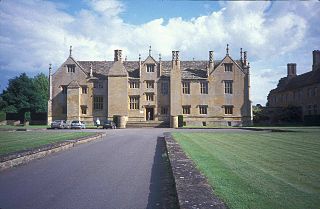
Barrington Court is a Tudor manor house begun around 1538 and completed in the late 1550s, with a vernacular stable court (1675), situated in Barrington, near Ilminster, Somerset, England.

Moor Park is a Palladian mansion set within several hundred acres of parkland to the south-east of Rickmansworth in Hertfordshire, England. It is called Moor Park Mansion because it is in the old park of the Manor of More. It now serves as the clubhouse of Moor Park Golf Club.

Saltford Lock is a canal lock situated on the River Avon, at the village of Saltford, between Bristol and Bath, England.

Saltford is a large English village and civil parish in the Bath and North East Somerset unitary authority, Somerset. It lies between the cities of Bristol and Bath, and adjoins Keynsham on the same route. Saltford Manor House claims to be the oldest continuously occupied dwelling in England.

Dodington Park is a country house and estate in Dodington, South Gloucestershire, England. The house was built by James Wyatt for Christopher Bethell Codrington. The family had made their fortune from sugar plantations in the Caribbean and were significant owners of slaves. It remained in the Codrington family until 1980; it is now owned by the British businessman James Dyson.

Hinton Admiral is the estate and ancestral home of the Tapps-Gervis-Meyrick family and located in the settlement of Hinton, near Bransgore in Hampshire, England. It is a Grade I Listed building.
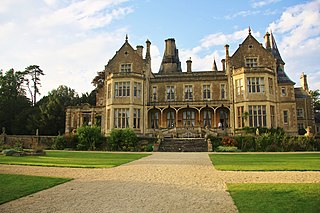
Orchardleigh is a country estate in Somerset, approximately two miles north of Frome, and on the southern edge of the village of Lullington. The privately held estate comprises a Victorian country house, the Orchardleigh Lake with its island church, and an 18-hole golf course.

Doughty House is a large house on Richmond Hill in Richmond, London, England, built in the 18th century, with later additions. It has fine views down over the Thames, and both the house and gallery are Grade II listed buildings.

Cothelstone Manor in Cothelstone, Somerset, England was built in the mid-16th century, largely demolished by the parliamentary troops in 1646 and rebuilt by E.J. Esdaile in 1855–56.

Caerhays Castle or Carhayes Castle is a semi-castellated manor house 0.5 mi (0.80 km) south of the village centre, St Michael Caerhays, Cornwall, England, UK. It overlooks Porthluney Cove on the English Channel. The garden hosts the largest collection of magnolias in the United Kingdom and contains one of four National Magnolia Collections under the auspices of the National Council for the Conservation of Plants and Gardens.

Kettlethorpe is a village and civil parish in the West Lindsey district of Lincolnshire, England. It is situated 10 miles (16 km) west from the city of Lincoln. The villages of Drinsey Nook and Laughterton lie within Kettlethorpe parish. The population of the civil parish taken at the 2011 census was 426.
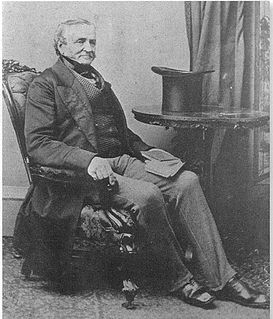
Benedictus Marwood Kelly was an officer of the Royal Navy. He rose to the rank of admiral after service in the French Revolutionary and Napoleonic Wars.
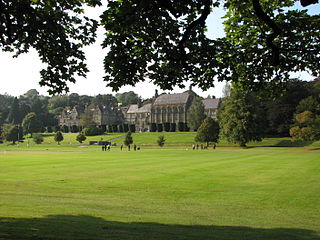
Mount Kelly School is a co-educational independent day and boarding school for pupils from 3 to 18, in Tavistock.
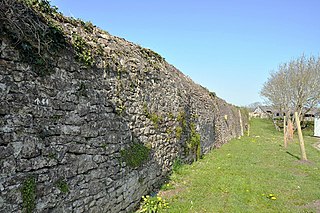
Cowbridge town wall is a Grade II*-listed medieval wall in the small market town of Cowbridge in the Vale of Glamorgan, south Wales. The walls were built by about 1300. It is believed that the purpose of the wall was to protect the Lord of Glamorgan's burgage plots and to provide a way of collecting tolls from the town's market, held twice-weekly. The wall has been altered several times throughout its existence.

Abbotswood is a country house and estate near Lower Swell in Gloucestershire, England. It is a grade II listed building and estate, of medieval origins and with remodelling and garden work to the designs of Sir Edwin Lutyens from 1901 onwards.

Hillfield House is a grade II listed house in Denmark Road, Gloucester, in England. The building, in the Italianate style popularised by Charles Barry, is faced in ashlar Bath stone, with a centrally placed tower and a porte-cochère entrance.
References
- 1 2 3 "Saltford House and attached garden walls to north and west". National Heritage List for England. Historic England. Retrieved 2 October 2016.
- ↑ "Saltford House and attached garden walls to north and west". historicengland.org.uk. Historic England. Retrieved 2 October 2016.
- ↑ "Saltford Parish Plan" (PDF). Saltford Parish Council. Retrieved 2 October 2016.
- ↑ "Pair of gateways and garden wall enclosing front garden of Saltford House". National Heritage List for England. Historic England. Retrieved 2 October 2016.
- ↑ "Wightman [née James], Julia Bainbrigge (1817–1898), temperance activist and author". Oxford Dictionary of National Biography. doi:10.1093/ref:odnb/39165 . Retrieved 2020-06-28.
- ↑ "Online Museum (19th Century) of past life in and around Saltford - published by SEG". www.saltfordenvironmentgroup.org.uk. Retrieved 2020-06-29.
- ↑ "Admiral Benedictus Marwood Kelly". The London Gazette. p. 6603. 29 November 1867. Retrieved 26 December 2014.
- 1 2 "Blue plaque honours Admiral Benedictus Kelly". BBC. Retrieved 2 October 2016.